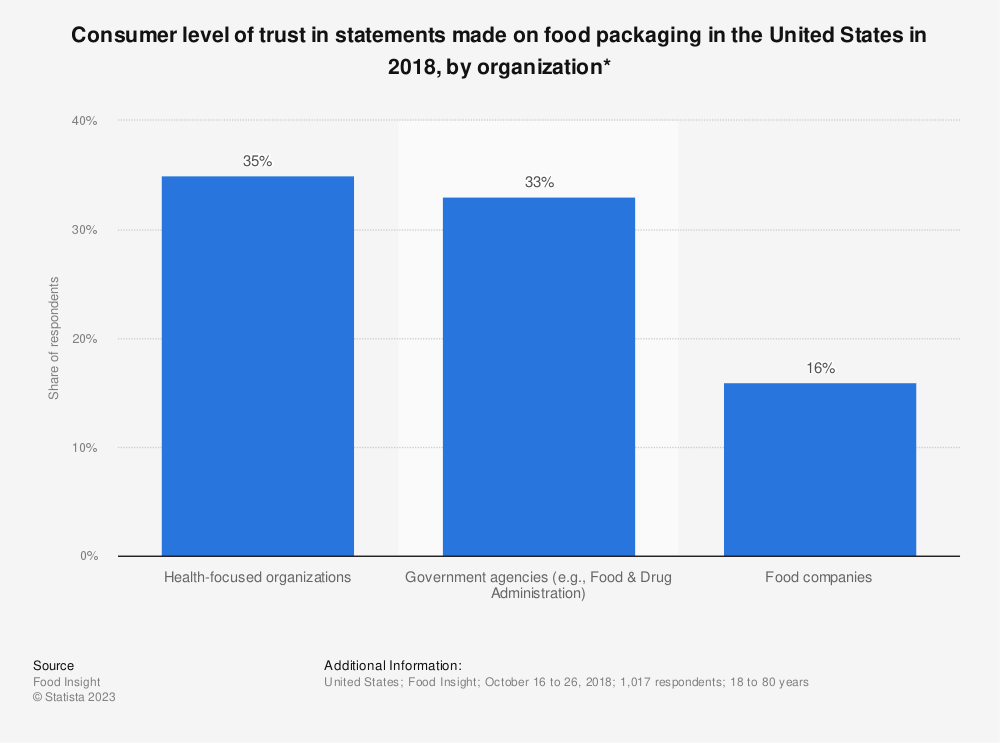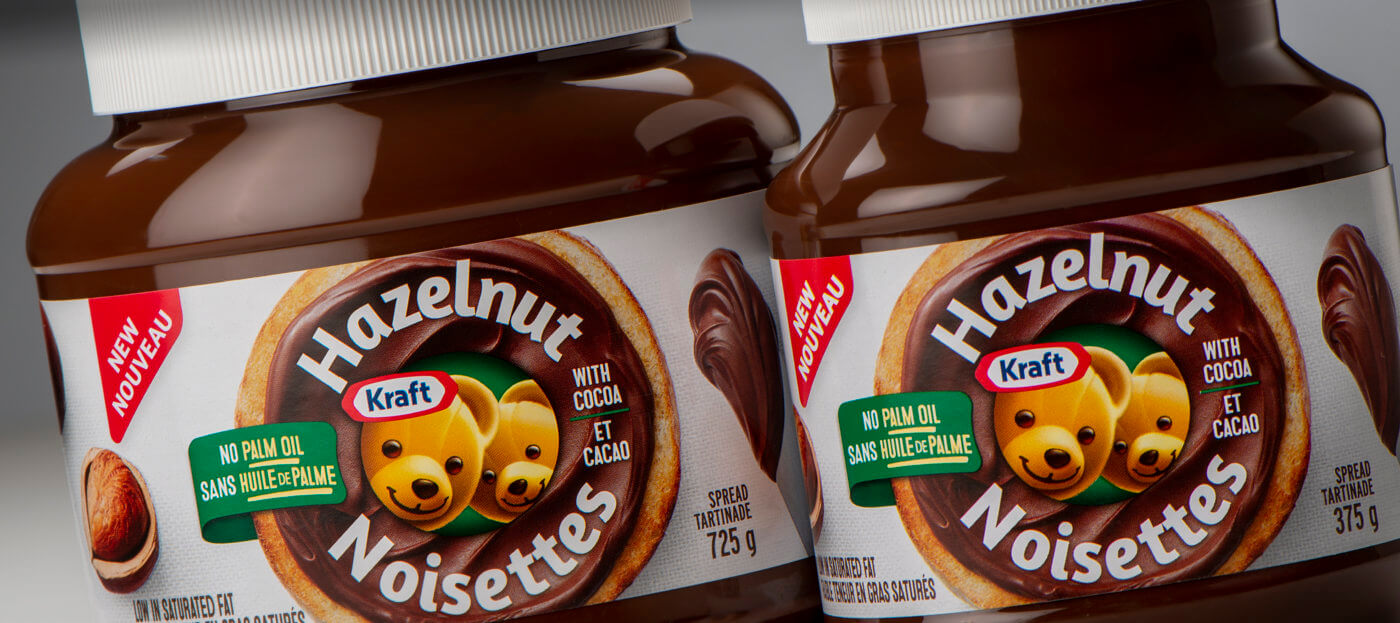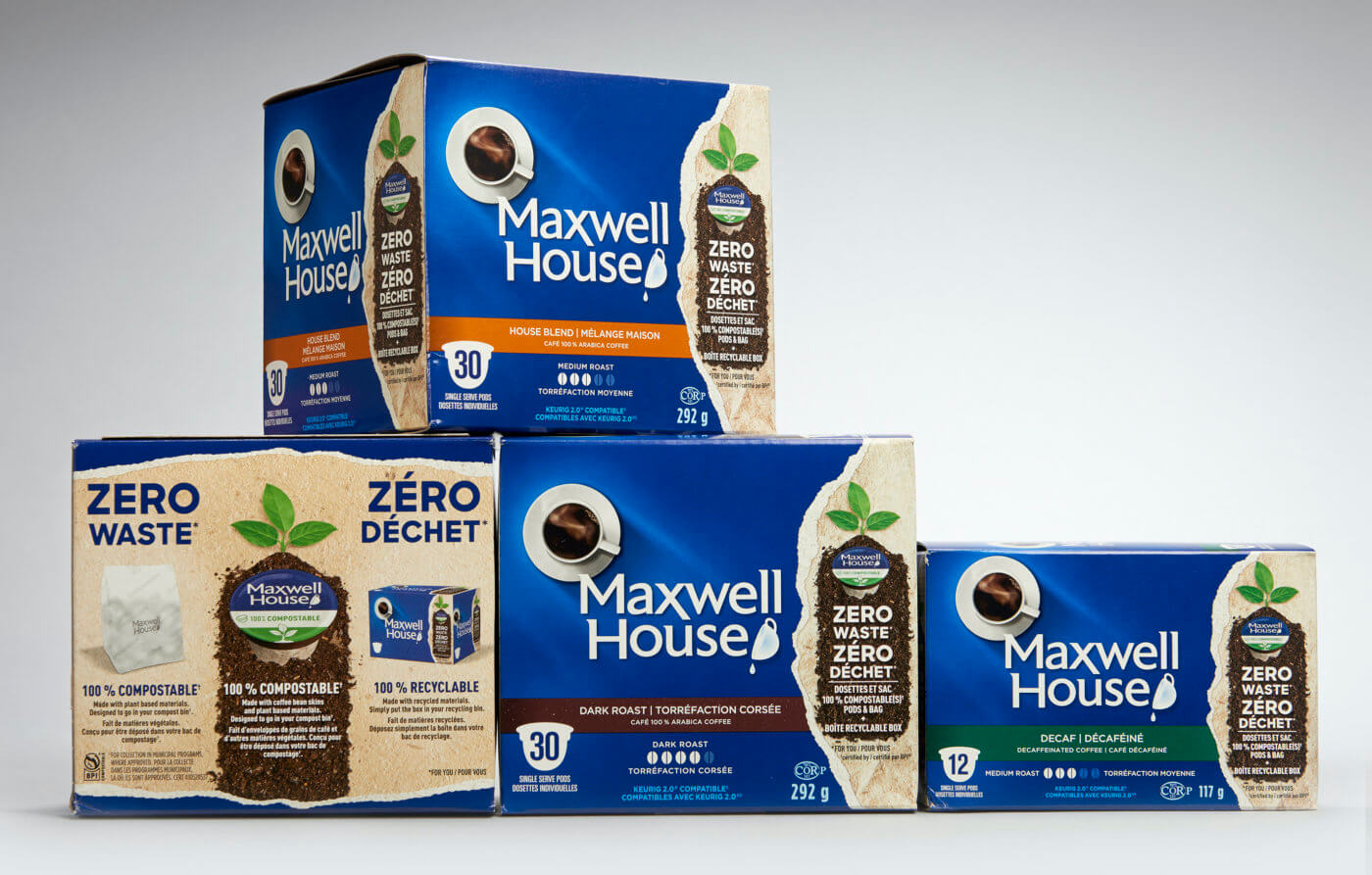When customers are shopping for groceries, they make decisions quickly about what to buy. Most of the items they select will be regular, habitual choices. This makes it harder for brands to capture new shoppers. Front-of-pack design is the last opportunity brands have to make an impression. A visually arresting design catches the eye and can sometimes be enough on its own. But to close the deal, claims that highlight key product benefits are critical. In this blog, we will explore how brands can improve consumer confidence through their on-pack communications.
The Paradox of Claims
Brand managers have read dozens of studies telling them consumers want and will pay more for products that are better for them and the planet. The paradox is that consumers don’t trust sustainability/health claims. Only about 40% of consumers trust health claims and around half are skeptical about sustainability claims. While a claim may attract one consumer, it may also turn another away. Why is this happening, and what can brands do to turn this around?
Mistrust is Growing
Various organizations measure consumer confidence and trust, and they agree that our confidence in institutions is falling. This is especially true of larger organizations, governments, and media. The reasons for this are multi-faceted. The spread of misinformation and disinformation, the rising cost of living, and political polarization contribute to a context in which consumers feel stressed and uncertain. The only group in which confidence is strong and growing, outside of personal connections, is scientists. This seems to fly in the face of trends like the anti-vaccine movement. However, as our Inclusivity in Retail study suggests, headlines do not necessarily align with widespread beliefs. Consumers are at least aligned in feeling that the system is rigged against them, while brands are increasingly seen as antagonists rather than allies.

Image Source: Statista
But Our Claims Were Cleared by Legal!
Brands are bound by all kinds of regulations that may give them unwarranted confidence in how claims will be perceived. Consider this: many consumers don’t realize claims are regulated. And those who do may have little confidence in regulations, perhaps with good reasons. For example, in Canada, a claim of “Product of Canada” refers to a product where 98% of production and manufacturing is Canadian, while a claim of “Made In Canada” only requires 51%. Consumers can’t possibly be expected to be aware of such arbitrary rules.
Brands are also in part to blame. Greenwashing has caused considerable damage to confidence in sustainability claims. Health trends can drive brands to create messages that, while popular at the moment, may be misleading.
All this is to say: Just because you can legally make a claim doesn’t mean you should.
Exciting Copy Versus Boring Numbers
Recent research suggests that one of the factors determining the trustworthiness of a claim is the way in which it is framed. In this study by Purdue University, trust in dry, numeric information including ingredient labels, expiration dates, and nutritional panels was found to be relatively high at around 70% for each factor. Comparatively, trust in claims that tend to be dressed up, including health, natural, and human welfare claims, is much lower, at only 40%.
Another study by a U.S. team supports the finding of greater trust in straightforward information. When claims are written by copywriters as fun, punchy taglines, they sound more exciting and unique. However, as consumer trust in media plummets, this kind of verbiage is seen as spin. Dry information, on the other hand, is perceived to be more scientific, and therefore more reliable.
Additional research in sustainability claims supports these findings. In this experiment, consumers were offered an eco-ride share and exposed to a range of supporting claims. These messages included equivalence-based claims and raw carbon emission values. Equivalence-based claims compare environmental impact to a familiar usage, essentially translating the science into layman’s terms. For example, “our package reduces carbon equivalent to planting X number of trees.” Raw emission values, on the other hand, simply report a numeric value of carbon reduction. Researchers predicted consumers would be more responsive to the equivalence-based claims; however, the opposite was true. Consumers were twice as likely to select eco-options when they saw raw emissions data. This is another example where scientific claims outperformed a marketing interpretation.
This seems like a dramatic shift from the conventional marketing strategy which assumes consumers struggle to understand nutritional labels and scientific data. The change may indicate aversion to “marketing speak” is strong enough to trump crystal clear understanding.
What is a Best-in-Class Approach to Claims?
After many years of accumulating claims, brands are in the process of cleaning up their package designs. This is an excellent opportunity to review what claims are relevant to your target consumers, and how to best frame them to improve trust.
Rule #1. Align with your consumers
Who you are targeting and what they want should be your guiding light. What does your product offer that is of key concern to the consumers? Better yet, what do you offer that other brands do not? It’s important not to assume that what your consumers wanted five years ago is still relevant today. Ensure you follow an evidence-based approach by engaging with consumers on an ongoing basis. If you are out of step, a repositioning exercise may be warranted (download a free guide here). Remember, a differentiating claim can be powerful only if it’s highly relevant. Focusing on the benefits to your consumers is the most important principle to follow when considering claims.
Rule #2. Less is more
You may have a tiny can or a large box – the rule is the same. When customers walk up and down the grocery aisles, they will see thousands of products. A cluttered front-of-pack design won’t let your key message shine. Remove outdated nutritional claims and evaluate what third-party claims are most important. Ideally, the front panel would only feature three or fewer claims. Anything else can be moved to a side or back panel. If you are struggling to edit, keep in mind that a customer makes a choice within a few seconds in the grocery aisle. What do you want to say in those few seconds? A pared-down approach will force you to prioritize carefully.
Rule #3. Feature your star claim
The front of the pack will feature other communication points beyond claims. Flavor, portion size, logo, and other visuals will all be competing for attention. Creating a hierarchy of communication will be critical if your claims are going to do their job. Deciding on your star claim should not be a matter of opinion. A/B tests can help determine which claim should be featured as the “star” message, as well as where other communication points should fit. Your design partners will help you determine how to create a visual impact to ensure your star claim shines. Then draw the eye to other key information in order of priority. For example, Kraft Hazelnut Spread uses a differentiating factor of “No Palm Oil” as their star claim.

Image Source: SLD
Rule #4. Use straightforward language
Be simple, direct, and clear. It must be easy for anyone to understand the claim, and there should be no confusion about caveats. Any claim requiring fine print or long conversations with the legal department is not straightforward enough. In today’s climate where food manufacturers and grocery stores are facing increased scrutiny, spinning regulations isn’t worth any short-term benefit. Resist the urge to dress up claims with romance copy – the cleanest version of your claim is the best option.
Rule #5. Back up your claims
Once your star claim has caught the consumers’ attention, use the side and back panels to tell them the whole story. This is especially important if you are featuring a sustainability/health claim that may be greeted with skepticism. For the launch of zero waste coffee pods by Maxwell House, we featured not only a bold front-of-pack makeover to tell a strong sustainability story but also additional information on the back panel. This level of detail reassured consumers that the claim of zero waste was true and gave them instructions on how to complete the cycle correctly. Side and back panels are ideal for any third-party verifications that are not critical for the front panel, as well as storytelling around your key product benefits.

Image Source: SLD
Reclaim Trust
Consumers are facing an uncertain world. Brands can be part of the solution by taking greater care to emphasize trust in their communications. By ensuring claims are not only factual but transparent, brands can improve their overall relationship with consumers.

